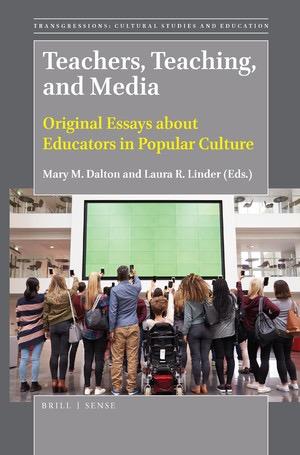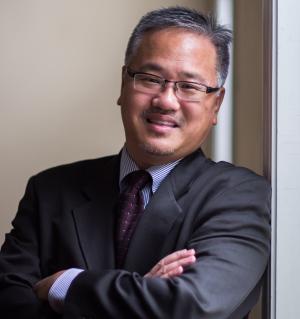Resources

Popular representations of teachers and teaching are easy to take for granted precisely because they are so accessible and pervasive. Our lives are intertextual in the way lived experiences overlap with the stories of others presented to us through mass media. It is this set of connected narratives that we bring into classrooms and into discussions of educational policy. In this day and time—with public education under siege by forces eager to deprofessionalize teaching and transfer public funds to benefit private enterprises—we ignore the dominant discourse about education and the patterns of representation that typify educator characters at our peril. This edited volume offers a fresh take on educator characters in popular culture and also includes important essays about media texts that have not been addressed adequately in the literature previously. The 15 chapters cover diverse forms from literary classics to iconic teacher movies to popular television to rock ‘n’ roll. Topics explored include pedagogy through the lenses of gender, sexuality, race, disability, politics, narrative archetypes, curriculum, teaching strategies, and liberatory praxis. The various perspectives represented in this volume come from scholars and practitioners of education at all levels of schooling. This book is especially timely in an era when public education in the United States is under assault from conservative political forces and undervalued by the general public. (From the Publisher)

Anyone who has been teaching for a while knows that stress is normal for our vocation. When stress is prolonged over a long period of time, we experience exhaustion. Online instruction can compound the effects of mental, emotional, and even physical exhaustion because of course design that extends the time for planning, preparing, and implementing a course. Managing Your Online Instruction I don’t feel like an expert on self-care, but I have learned some healthy habits to keep teaching online not only manageable, but rewarding. Here is what I have learned so far. 1. Plan ahead and give yourself ample time for course design in online instruction. The largest and most long-term online project I have tackled is, by far, reinvigorating my institution’s distant learners Greek language program. From designing and creating a two-course sequence to implementing and teaching it online, it was a project that lasted a full year. When I started, I had already taught beginning Greek in a traditional F2F on-campus classroom setting for over 10 years. Converting my existing F2F class into a new asynchronous course on the Canvas learning management system (LMS) was a challenge. I had a head start since I had already laid out the course content in my traditional F2F class. This spared me the extra stress and work of trying to plan the course from scratch. Instead, I focused on understanding best online instruction pedagogical practices and implementing new technology. I had to create and produce over 80+ instructional videos, learn how to use the video-conferencing technology for Greek tutoring, and design assignments that made use of Canvas’ full features which included online quizzes. The course design took the entire summer. 3 intense months. It would have taken longer if I had not the experience and past resources of having taught the class beforehand. Whatever you do, plan ahead. You need at least a month to plan out a course and another three to create it on your institution’s LMS. If you don’t give yourself ample time for course design, you will exhaust yourself from creating the course and not have much reserve to teach it. 2. Set aside a no-work day for yourself while implementing the course. Pick one day a week and let students know that on that day, you will be offline not answering any correspondence. We all need a Sabbath space in our weekly schedule to pull away from our work and rest. I have found Saturdays to be the best day off. It affords me time to spend with family and friends. Sundays never worked for me. They tend be days when students scramble to finish their assignments online prior to deadlines on Monday. Know what days work and don’t work for your schedule. Pick a Sabbath day and make it sacred. If you let students know ahead of time, they will honor your day off and expect a response to their queries later. 3. Recharge your motivation for teaching. What makes online instruction a rewarding experience for you? Some of my colleagues enjoy the research and reading that comes with preparing a class. Others, like myself, need a personal connection with students to stay motivated. Whatever the source of inspiration, turn back to it periodically to recharge your enthusiasm for the course. Take the opportunities to stay inspired as they arise. When I was attending an annual denominational event during the Winter break, I learned that a number of my online students would be attending the conference. We met at a local Starbucks simply to connect. We talked about all things Greek and New Testament. But I also learned about their stories and ministries. I heard what they loved about the course and why they wanted to learn the biblical languages. What they shared that day renewed my desire and motivation to teach. Mental exhaustion gave way to rekindled inspiration. I was ready to tackle the rest of semester. 4. Practice the spiritual disciplines faithfully. Here I’m writing to theological educators. We all have our favorite spiritual disciplines: a daily devotional, times of prayer, morning or mid-day offices, or walks for reflection and meditation. I have found walks an important way to reflect on my vocation and pray for students. Whatever your spiritual tradition, observe it faithfully and experience the grace to persevere through even the toughest of semesters.

Students are always already being "formed" in our online classes, whether we mean to have incorporated "formation" into our course designs or not. In this ineluctable process of formation, do the communities of inquiry designed into our online classes align with the norms and values of the communities into which we mean to form our learners? By "formation" in this post, I do not particularly mean "spiritual formation," but I also do not exclude it. If "spiritual formation" involves the practices and conditions for becoming transformed into the community of disciples to Jesus Christ so too is the instructor of (say) Hebrew Bible, Church History, or Theology also forming learners toward the norms and practices of their respective disciplinary communities. Even before that, however, we are already forming learners into a prior community: the communities of inquiry fostered in our course designs. Some readers will already know that from a constructivist perspective learning always involves a creative synthesis, accomplished in the learner, of the experiences and insights she brings to the learning moment, with the new information she encounters there. Crafting within herself this new thing, she is changed in the process of constructing for herself new enduring understandings; that is, she is transformed. Moreover, again from a constructivist standpoint, this creative enterprise of making meaning happens most reliably in collaboration with other learners and in the generation of public projects; that is, the learner is transformed among and via community. Learning, then, is always a matter of transformation in and into community. What, then, will be the norms, practices, and ideology of this learning community, or community of inquiry? To what extent will these be intentional or accidental? How well or poorly will they align with the communities into which we mean our learners to be formed: the community of disciples, or of biblical scholars, or of chaplains, or historians, or theologians? For example, one enduring understanding that I mean for learners to absorb in my Hebrew Bible courses is that biblical studies grounds its claims in publicly available evidence and explicit lines of reasoning, rather than in private revelation or sectarian dogma. Documentary hypotheses for the composition of the Pentateuch are not "alternative dogmas" to an unassailable sectarian claim that Moses authored the first five books of the Bible. An archaeological conclusion that Jericho had no fortifications during any possible time in which one can posit an emergence of Israel in the land is not an "alternative dogma" to an appeal to tradition that Joshua made the walls to tumble down. In this context, with what sort of cognitive dissonance do I set a learner if I refuse to make transparent my rubrics for assessing his exegesis paper? ("It just feels like a B minus.") If my appeal is to the inscrutable and unquestionable authority of my disciplinary expertise and teaching experience, I signal a very different kind of norms for the community of biblical scholars to that which I have been at pains to illustrate in my course design. Do my syllabus and other communication documents direct learners toward institutional policies regarding accommodations for medical issues, disabilities, neurodivergence, and so on? An explicit commitment to reasonable accommodation signals a community norm of inclusion. If I want my learners to imagine the community of disciples as one marked by radical inclusion, then the community of inquiry fostered in my online class is the place to start. Do you find that your institutional policies regarding accommodation are difficult to locate, or hard to understand, or implicitly overridden by instructor whim? It may be time to escalate the matter (to a dean of students or academic dean, to a faculty council, even to a student council). Accommodation in the online class is at least as challenging as in the face-to-face class. How does one accommodate "extra time" for a collaborative assignment that begins and ends over the course of a week? Have I crafted my course documents (syllabus, assignment instructions, feedback) such that they are legible to a "reading" computer program used by a cognitively or visually impaired learner (or my audio-visual resources for the hearing-impaired learner)? It's a tough standard by which to evaluate my online course design, but one that takes seriously the facts that 1) I explicitly describe to learners the ideals of the disciplinary community in which my class seeks to form them, and 2) my course design is forming them into some kind of community of inquiry with its own values . . . intended or not, planned or accidental.
One-page Teaching Tactic that adopts and adapts a technique of classical theological education, secularizing it for an undergraduate context.
One-page Teaching Tactic that taps into students' interest in and knowledge of Facebook to help them read the Bible's four Gospels with fresh eyes.
One-page Teaching Tactic that describes ways that to enhance a class field trip to an academic conference.
How is quilt‐making both metaphor and pedagogy for early‐career faculty of theology and religion who seek to cultivate critical and creative imagination for teaching, and to probe the challenges and promises of complex identities and vocations within 21st‐century landscapes of theological education? This forum presents essays (with explanatory introduction) by five members of the 2016–2017 Workshop for Early Career Theological School Faculty, who were impelled to story their experience of being “handed over to themselves” by an “arts and craft” project which forced them to think with their hands, speak with found objects, and re‐present themselves in the form of 12 × 12‐inch quilt squares. In self‐reflexive prose, these scholar‐teachers offer through this medium a glimpse of their unexpected moments of revelatory learning, as each was pulled into deeper contemplation of their personhood, experience, know‐how, and practical wisdom, each uncovering valuable hidden sources for more expansive theological query, and each re‐thinking the possibilities for theological education and its pedagogies.
This edited transcript of a roundtable “fishbowl” conversation at a session of the 2018 national conference of the American Academy of Religion brings three teaching scholars together around a shared reading of Jane Fried's book, Education, Fishbowls, and Rabbit Holes: Rethinking Teaching and Liberal Education for an Interconnected World (Stylus, 2016). Fried's concept of student “self‐authorship” quickly emerges as the dominant theme of the conversation, providing fresh perspectives on the purposes and goals of an academic classroom and the place of the study of religion within the liberal arts curriculum.
This article discusses an experiential teaching method that uses secular activities that are simple, accessible, and analogous to religious practice in order to facilitate comparative religious study. These “analogous activities” – for example, social rituals, stillness, yoga, a social media fast, singing, nonviolent communication, and mindfulness meditation – provide a third point of reference that allows students to pivot between their understanding of religion and those of practitioners and scholars of religion. Experiential learning can be quite successful if deliberately sequenced to allow students to encounter a series of interpretive frameworks and structured with prompts and parameters that encourage reflection and critical analysis of their experience. In my course engaging in analogous activities not only impacted students' understanding of Asian religions, but also led them to question two previous assumptions: first, that religious beliefs were more important than religious practices, which is particularly problematic in regards to Asian religious traditions that place more emphasis on orthopraxy than orthodoxy, and second, that religion was something separate from one's everyday or lived reality.
Many early efforts at teaching preaching online incurred disastrous losses in quality. Revamped versions now claim to meet, and in some areas even exceed, classroom learning effectiveness, with potentially significant gains for students from non‚Äêdominant cultures. Students preach in local ethnic and denominational contexts, so a wider range of sermon styles can flourish in indigenous soil. Students hear immediate feedback from their community, and from their online peers and professor. Online discussion formats level the playing field for non‚Äênative speakers. By remaining embedded in their denominational and ethnic environments, student's cultural differences may be simultaneously affirmed and critiqued. This article describes capacities which predict success among preaching students, and how culture may influence the manifestation of these capacities. It details best practices and continuing challenges for professors making the transition to online preaching courses, as they seek to build culturally sustaining learning environments in which diverse students may flourish.